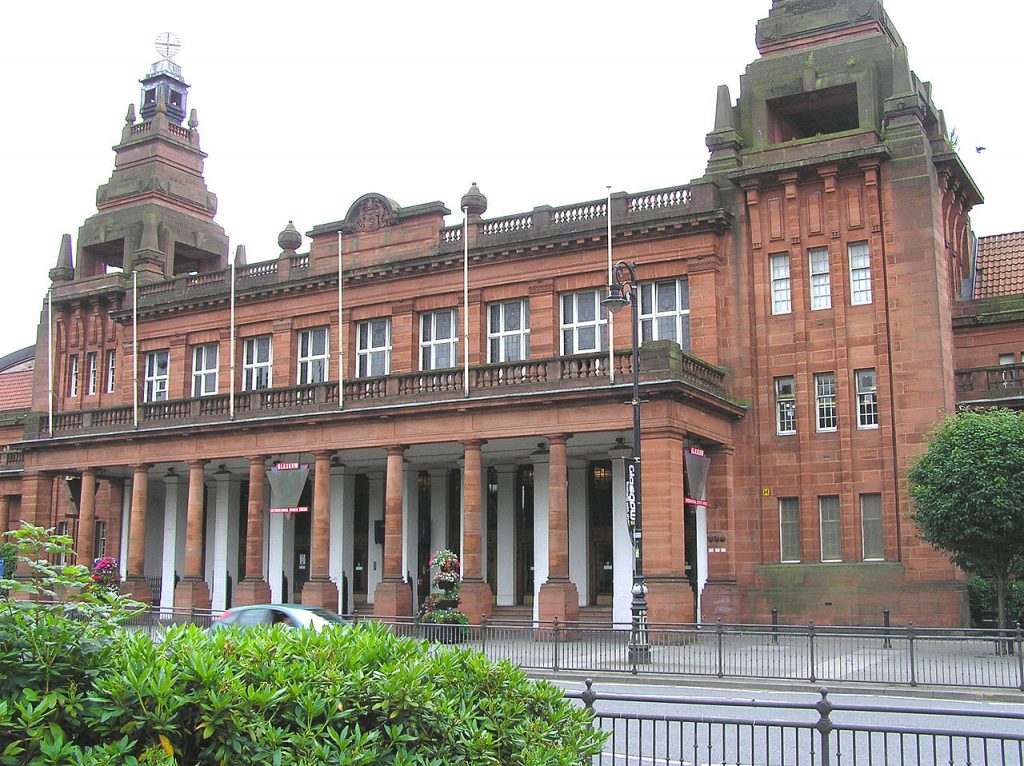Home University of Edinburgh Library Essentials
July 27, 2024
Evaluation of Digital Cultural Resources in Glasgow
Posted on December 22, 2016 | in Library & University Collections, Museums, St Cecilia's Hall | by Scott Renton
The revamped Kelvin Hall in Glasgow was the destination for the Scottish Digital Cultural Heritage Evaluation Network’s winter symposium, on December 12 and 13. Now the home of much of the University of Glasgow’s Hunterian Museum collection and the National Library’s Moving Image Archive, the Kelvin Hall is becoming the ultimate community space, continuing to host its leisure facilities amidst a burgeoning collection of museums objects. The juxtaposition, in fact, seemed particularly quirky to me, as I was sitting in a lecture theatre next to the 5-a-side courts I used to play on as a boy!
The thrust of the network, and thus the conference, was really about measuring the unmeasurable: how to find out the impact of digital discovery of museums objects beyond obvious KPIs such as analytics data and website hits. We are generally able to get this surface information quite easily, but it is much harder to quantify the social or legacy impacts and outcomes of putting cultural content online.
A number of institutions put forward papers highlighting their varied attempts to solve this problem. We became acquainted- thanks to Marco de Niet with the ENUMERATE framework which Europeana have integrated into their evaluations. It measures impact through a combination of quantifiable data, surveys and questionnaires. Laura Gottlieb at the imminently-opening Swedish Museum of Performing Arts, meanwhile, demonstrated the MIQS (Mixed Interactive Quality Study) toolkit, which used very useful approaches (again, largely survey-based) to this evaluation.
A much-photographed Europeana-run workshop put us in the shoes of museums decision-makers to think of different ways of looking at impact (they spoke of five lenses- utility, learning, legacy, existence, and community), to really consider how tools deliver outputs, outcomes, and ultimately impacts. I hadn’t really thought, before about the social cohesion, potentially leading to health benefits, that a digital collection could bring, but a strong case was made for it! Here’s the report.
It’s important for us to consider these questions, especially just now, with the re-opening of St Cecilia’s Hall upon us. The digital surfacing of the content is expected to be an integral component of the museum’s presence, so it’s important that we get it right. It’s also good to know that we can talk to the Hunterian- in the light of their recent major overhaul- about their experiences of a major change project.
Scott Renton, Digital Development
Collections
 Archival Provenance Project: Emily’s finds
My name is Emily, and I’m the second of the two archive interns that...
Archival Provenance Project: Emily’s finds
My name is Emily, and I’m the second of the two archive interns that...
 Archival Provenance Project: a glimpse into the university’s history through some of its oldest manuscripts
My name is Madeleine Reynolds, a fourth year PhD candidate in History of Art....
Archival Provenance Project: a glimpse into the university’s history through some of its oldest manuscripts
My name is Madeleine Reynolds, a fourth year PhD candidate in History of Art....
Projects
 Sustainable Exhibition Making: Recyclable Book Cradles
In this post, our Technician, Robyn Rogers, discusses the recyclable book cradles she has developed...
Sustainable Exhibition Making: Recyclable Book Cradles
In this post, our Technician, Robyn Rogers, discusses the recyclable book cradles she has developed...
 Giving Decorated Paper a Home … Rehousing Books and Paper Bindings
In the first post of this two part series, our Collection Care Technician, Robyn Rogers,...
Giving Decorated Paper a Home … Rehousing Books and Paper Bindings
In the first post of this two part series, our Collection Care Technician, Robyn Rogers,...
